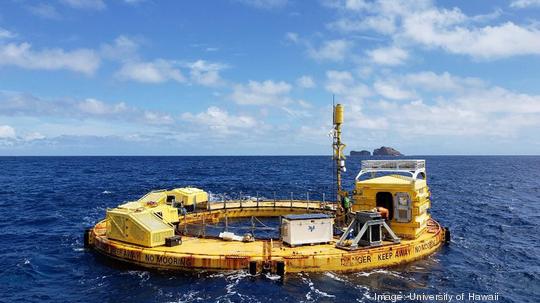
The University of Hawaii at Manoa recently received $6 million from the Naval Facilities Engineering Command, and Expeditionary Warfare Center to continue strides being made in the realm of wave conversion energy research, UH officials announced Wednesday.
The funds — which will go to UH Manoa's Hawaii Natural Energy Institute, or HNEI, to support the only grid-connected wave energy testing site in the United States — will provide research and logistical support for its programs. Specifically, the NAVFAC funds will be directed to the Applied Research Laboratory at UH, in collaboration with HNEI, allowing UH to support several wave energy converter deployments between 2021 to 2024 related to "environmental monitoring, power and survivability performance assessment, and additional logistics support to the Navy and pre-commercial wave energy converter developer companies," according to officials.
In addition to supporting the U.S. Navy’s Wave Energy Test Site, or WETS, off Marine Corps Base Hawaii, the new funds will support an expansion of UH research related to offshore, non-grid-connected applications of wave energy.
“We are excited by the Navy’s latest investment in our work to advance wave energy through our support of WETS, particularly as it allows us to expand our research into new areas of relevance to offshore applications, such as autonomous vehicle recharge for ocean observing purposes,” said Pat Cross, research specialist in marine energy at HNEI and principal investigator for the WETS support program, in a statement.
Added Nate Sinclair, WETS program manager, in a statement, “This is an exciting time for the EXWC Marine Energy Development program.
“Along with continuing to provide in-situ testing infrastructure and support for wave energy power to shore, we’re now making substantial investments for pursuing technology development that will lead to providing power in remote locations for Navy applications such as persistent surveillance and AUV recharging.”



